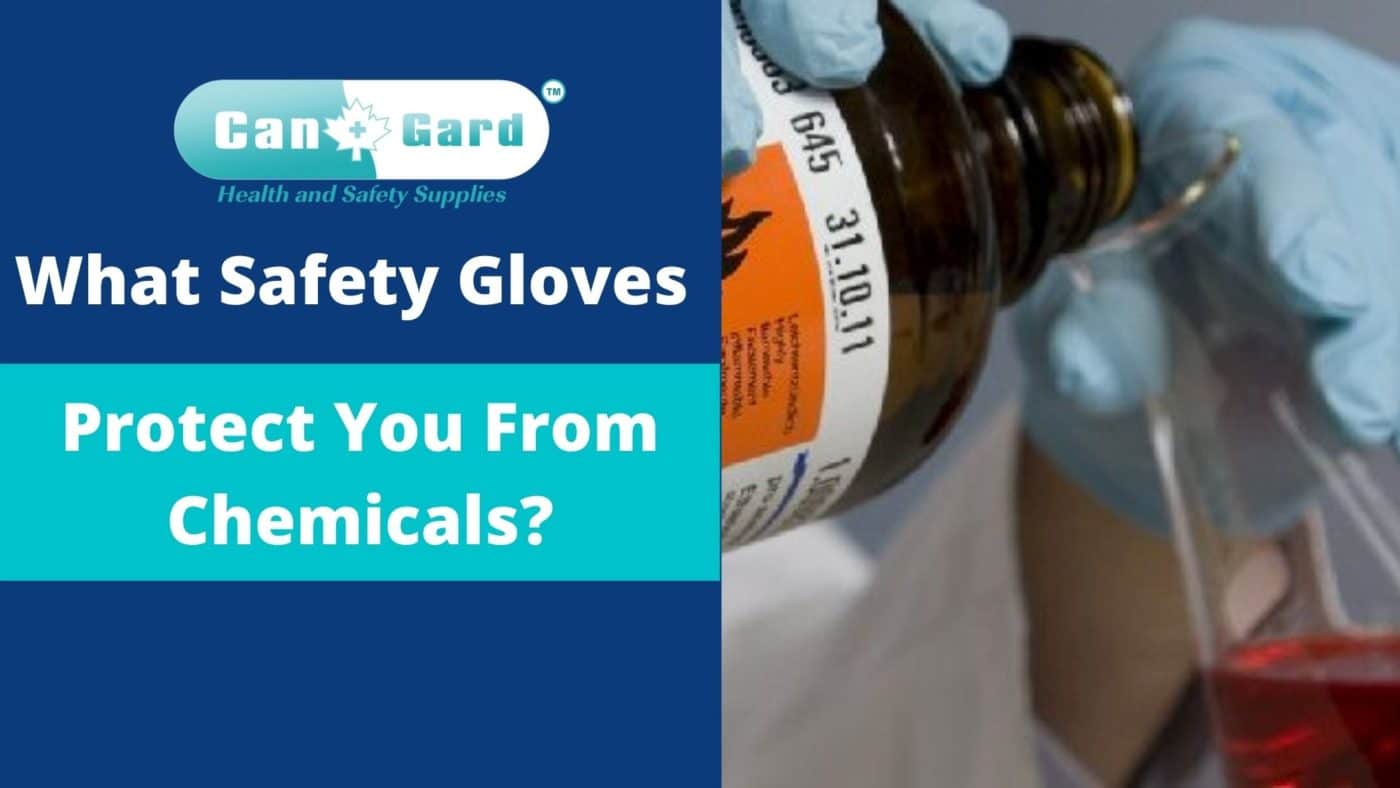No products in the cart.
Gloves
What Safety Gloves Protect You From Chemicals? Our Full Guide on Chemical-Resistant Gloves
It’s important to know what safety gloves protect you from chemicals, namely certified chemical-resistant gloves.
Chemical exposure is a significant health hazard and can lead to many long-term consequences, like cancer or chronic respiratory problems.
There are three types of chemical protection: contact, splash, and ventilation. You should also be aware that not all gloves offer the same level of protection. What does this mean for your business? It means that you need to do some research on which type of glove will work best with your specific needs!
What are PPE Gloves, and What do They Protect Against?
PPE gloves are personal protective equipment. They’re used to protect workers from harmful chemicals in the workplace and against certain diseases that may be passed on through contaminated blood or other bodily fluids.
PPE covers everything you wear at work- like your boots, clothes, safety goggles, respirator mask – anything that might help keep you safe!
PPE gloves have a high resistance to strong acids and alkalis (and many types of solvents) and can also withstand repeated exposure to water without becoming brittle. This makes them ideal for working with hazardous materials such as hydrofluoric acid or nitric acid, where contact time is short, but prolonged skin contact would cause severe burns. PPE gloves offer protection primarily by preventing the chemicals from being in contact with your skin. In many cases, PPE gloves are not enough, and other protective clothing or gear types should be worn as well.
What PPE Gloves Protect You From Chemicals?
Here is the type of gloves that can protect you from chemicals:
Fabric/Cotton Gloves: This type of glove is resistant to strong acids and alkalis (and many types of solvents) that can withstand repeated exposure to water without becoming brittle, for example, Hydrofluoric acid- a compound that causes burns if it comes into contact with human tissue. The cotton fabric also offers low friction, so this type of glove can work well on slippery surfaces such as glassware and metal tools like knives.
Latex or Rubber Gloves: These gloves offer protection from chemicals that can cause skin burns and eventual scarring. For example, Hydrochloric acid is a corrosive liquid that causes severe chemical burns if it comes into contact with human tissue.
Nitrile Gloves: These are a type of rubber glove generally used in industries where there is exposure to toxic substances such as acids or strong alkalis, for instance, hydrofluoric acid or other compounds containing sodium hydroxide (causes moderate skin irritation)
Textile/Non-Powdered Disposable Gloves: This kind of glove provides low acidic and alkaline resistance, so it should not be worn when dealing with acids or bases. On the contrary, this type of glove offers high oil resistance and has excellent versatility.
Tips On How to Find the Best PPE Gloves for You (Material, Color, Size, and Price)
Proper Fit: A well-fitted glove should be snug around all your fingers and hand but should not feel tight. It should also leave a small space between the glove and your wrist.
Color Variation: The color of safety gloves indicates what type of chemicals they can handle. Yellow is for oil, green for acids or solvents, red for bases/alkalies, blue for oxidizing agents, while white means that it has no resistance to any chemical substances.
Material: There are four materials used in making disposable PPE gloves- Vinyl Nitrile (VN), Natural Rubber Latex(RLX), Polyurethane Elastomer (PU), and Hydrophilic Nonwovens Foam Lining(HNF). Each material offers different levels of protection against chemicals and is used for various purposes.
Glove Care: Health and safety gloves need to be cared for to last long or even look new by following these steps:
To keep it from drying out, store the glove with its fingers, not touching each other(which prevents cracks), at an ambient temperature of 60º Fahrenheit (16º Celsius) or less. – Use a hand lotion on your hands before you put on any PPE gloves so that they are easier to take off during breaks as well as keeping them fresh. – Wipe away any dirt and sweat using a damp cloth while wearing disposable latex gloves, which will help reduce skin irritation when you continue working.
How Chemical Resistance Works
The main factors for the chemical resistance of a safety glove are the materials the glove is made out of and its thickness.
The chemicals that a safety glove protects you from will depend on what type of material it’s made out of; for example, nitrile gloves have good resistance to strong acids, alkalis, or solvents, while vinyl and latex are best at preventing hydrocarbons (such as gasoline) from seeping through.
A chemical-resistant PPE glove usually has several layers inside, including an outer layer that can be synthetic or natural rubber. At the same time, the inner lining provides better protection against certain types of chemicals.
According to OSHA, chemical-resistant gloves are made with different kinds of rubber: natural, butyl, neoprene, nitrile, and fluorocarbon (Viton); or other types of plastic: polyvinyl chloride, polyvinyl alcohol & polyethylene.
Chemical Resistance List: Acids – Alkali Solutions – Hydrocarbons – Solvents- Water Repellant Chemicals- Strong Oxidizing Agents- Amines, and more.
Where Can You Purchase a Pair of PPE Gloves?
You can purchase at CanGardCare.com or a local store near you.
FAQs about Chemical Resistant Gloves
1. What do chemical-resistant gloves protect me from?
Chemical Resistance Gloves will protect against various chemicals such as acids, alkali solutions, and water-repellant chemicals. They are not suitable for use with potent oxidizing agents or amines.
2. How can I choose the right protective glove to suit my need?
You should consider the type of work you’re doing, whether it’s in a laboratory or other industrial setting, which material is most likely to be encountered on that job, and your skin sensitivity to different kinds of rubber when choosing the best PPE gloves for you.
3. How do you clean chemical resistant gloves?
Disposable chemical resistant gloves are disposed of after use. However, reusable chemical-resistant gloves can be washed with a mild soap and water solution or treated by dipping them in a suitable disinfectant solution.
4. What other chemicals do these types of safety gloves protect me from?
Chemical Resistance Gloves also offer protection against acids, alkali solutions, and water-repellant chemicals.

